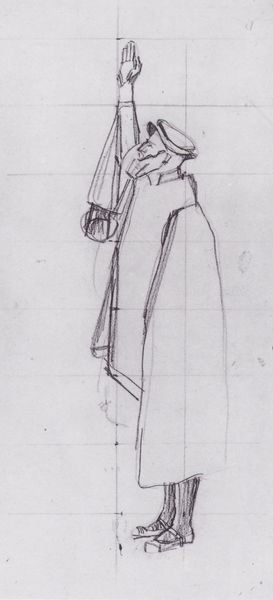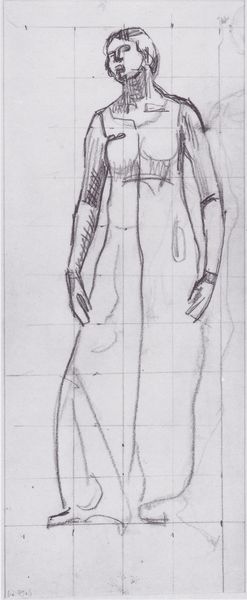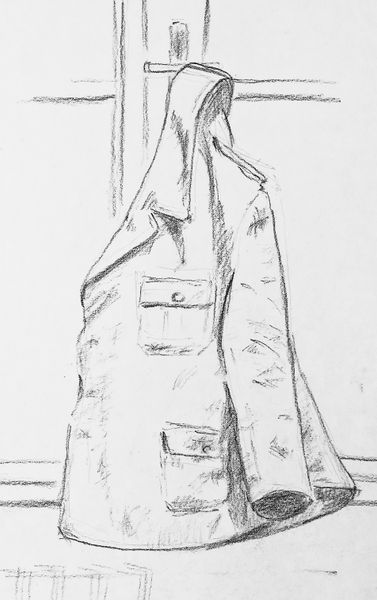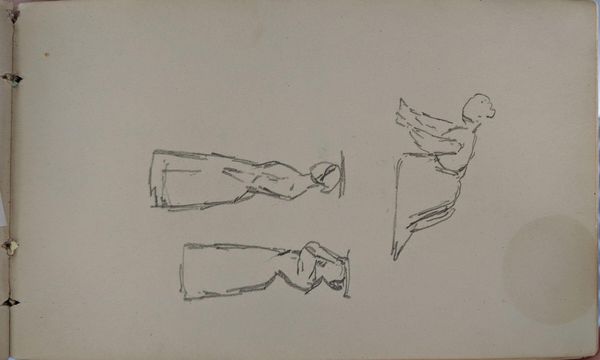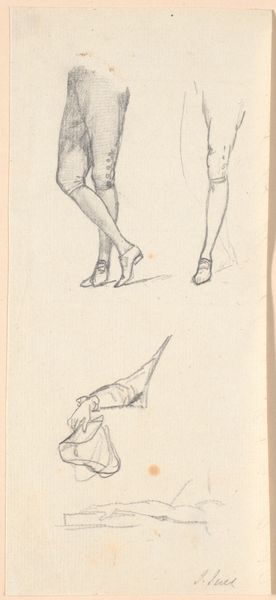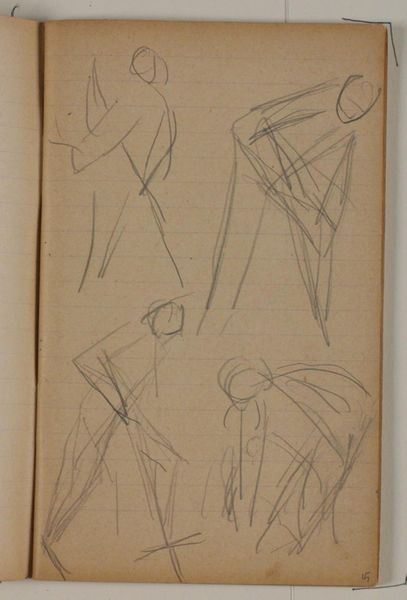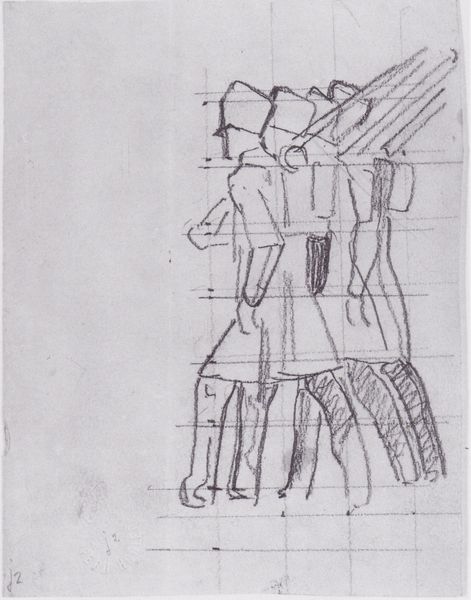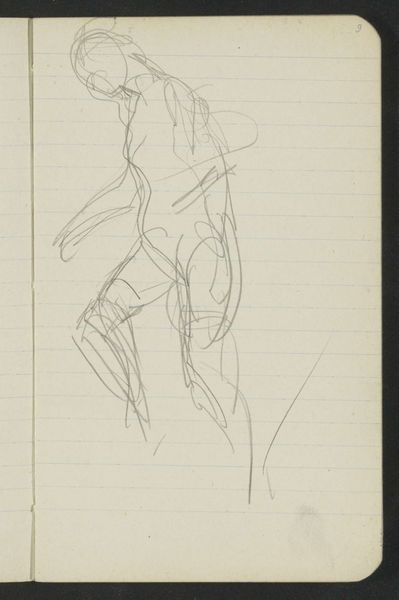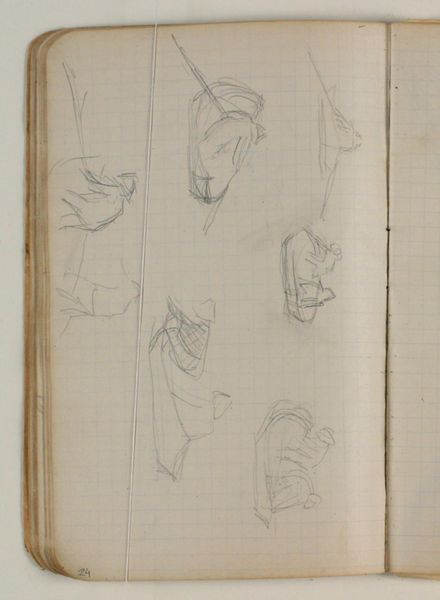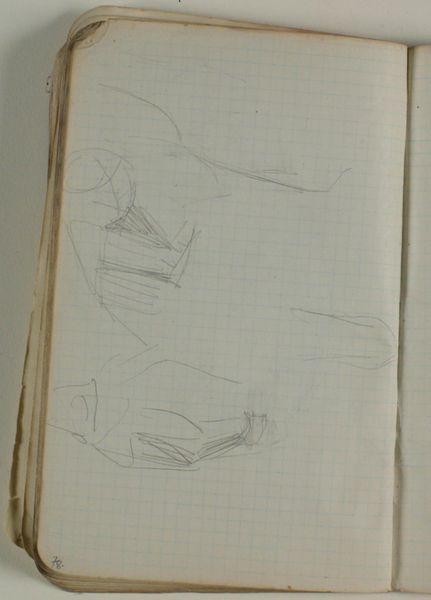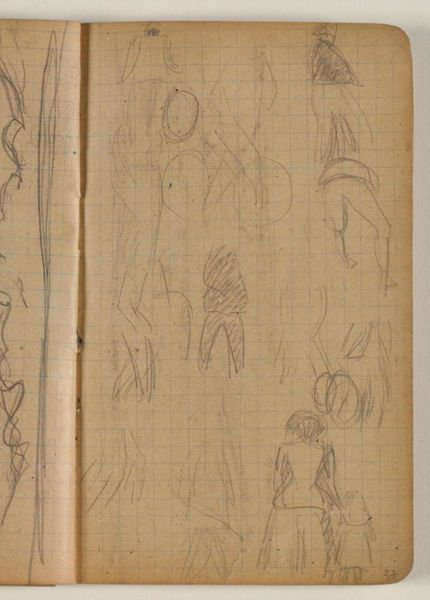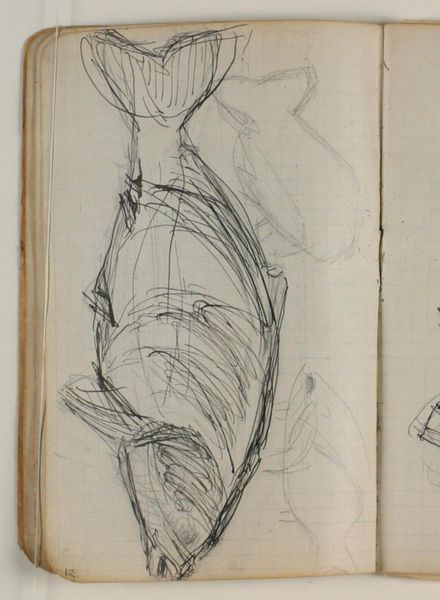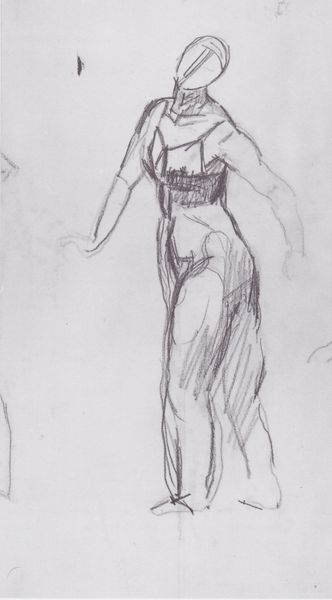
drawing, paper, pencil
#
drawing
#
table
#
paper
#
geometric
#
sketch
#
pencil
#
sketchbook drawing
Copyright: Rijks Museum: Open Domain
Editor: Here we have Gerrit Willem Dijsselhof’s "Tafelpoten," a pencil drawing on paper from around 1901. It depicts several sketches of table legs. There's something almost architectural about them, like miniature building columns. What do you see in this piece beyond the simple depiction of furniture design? Curator: Beyond the immediate practicality, these sketches offer a glimpse into the artistic milieu of the early 20th century, a period grappling with rapid industrialization and a longing for handcrafted beauty. The Arts and Crafts movement, and Art Nouveau specifically, were invested in elevating everyday objects to the realm of art, imbuing them with meaning and visual interest. Dijsselhof, closely related to Nieuwe Kunst in the Netherlands, wasn't just designing table legs; he was exploring how art could permeate daily life, responding to anxieties of mass production. Do you notice how these legs, though functional, incorporate decorative elements? What could those signify? Editor: Now that you mention it, I see how they reflect an effort to humanize these mass-produced objects... almost a rebellion against the coldness of industrial design. Curator: Exactly. This act of artistic elevation, however, wasn't always democratic. Consider who could afford such bespoke designs during that period. These beautiful, hand-crafted objects became, ironically, markers of class distinction. Recognizing that tension is crucial for a full understanding of Dijsselhof's practice and legacy. Editor: That's a really important point. I never considered the class implications of the Arts and Crafts movement before. Curator: It’s a complex legacy. It also highlights the artist's role in negotiating issues of accessibility and privilege through design choices. Looking at these sketches makes me think about the labor, the materials, and the social position that influenced the work, giving more depth to something seemingly simple. Editor: I’ll definitely look at design with a more critical eye from now on! Thank you.
Comments
No comments
Be the first to comment and join the conversation on the ultimate creative platform.
